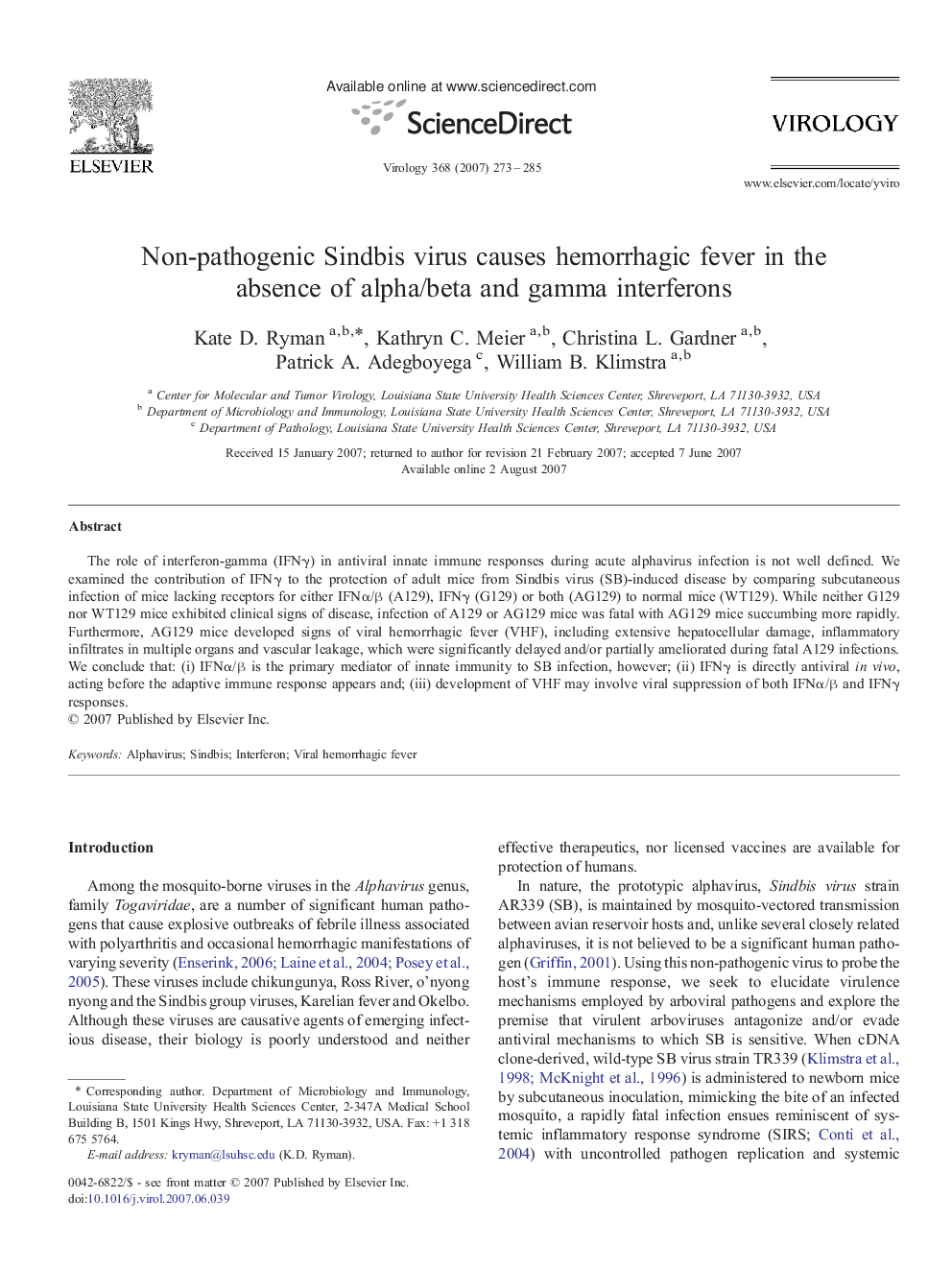| Article ID | Journal | Published Year | Pages | File Type |
|---|---|---|---|---|
| 3425897 | Virology | 2007 | 13 Pages |
The role of interferon-gamma (IFNγ) in antiviral innate immune responses during acute alphavirus infection is not well defined. We examined the contribution of IFNγ to the protection of adult mice from Sindbis virus (SB)-induced disease by comparing subcutaneous infection of mice lacking receptors for either IFNα/β (A129), IFNγ (G129) or both (AG129) to normal mice (WT129). While neither G129 nor WT129 mice exhibited clinical signs of disease, infection of A129 or AG129 mice was fatal with AG129 mice succumbing more rapidly. Furthermore, AG129 mice developed signs of viral hemorrhagic fever (VHF), including extensive hepatocellular damage, inflammatory infiltrates in multiple organs and vascular leakage, which were significantly delayed and/or partially ameliorated during fatal A129 infections. We conclude that: (i) IFNα/β is the primary mediator of innate immunity to SB infection, however; (ii) IFNγ is directly antiviral in vivo, acting before the adaptive immune response appears and; (iii) development of VHF may involve viral suppression of both IFNα/β and IFNγ responses.
